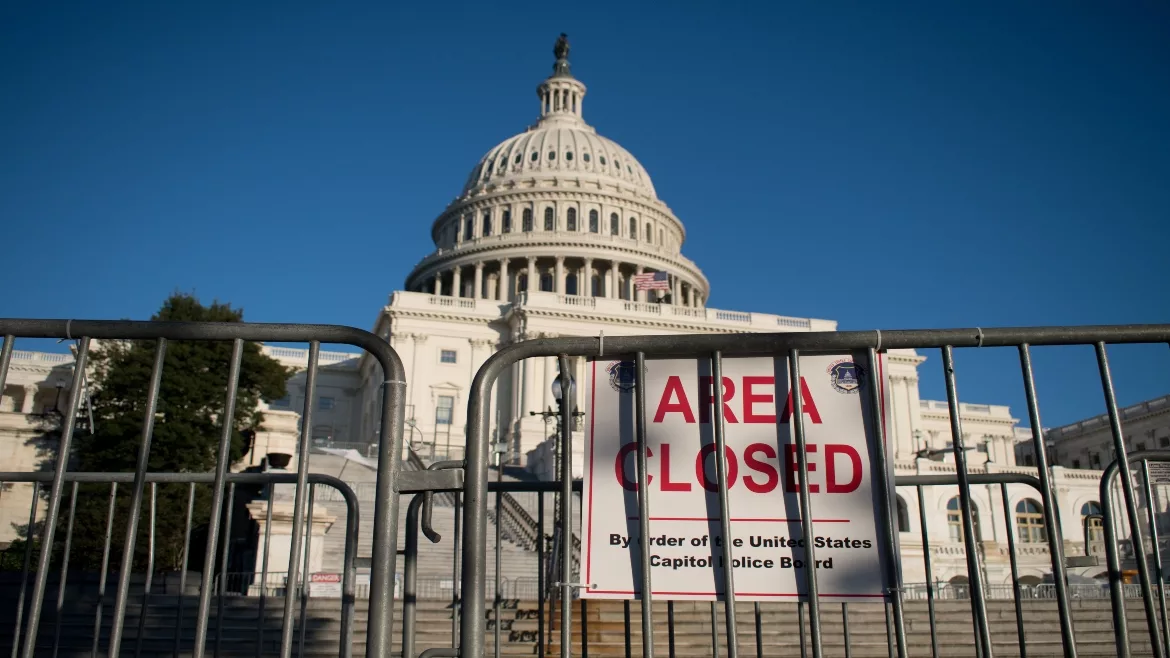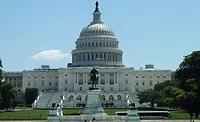Parliaments under attack worldwide — Extremism, riots, vaccine mandates and violence

Douglas Rissing via iStock by Getty Images
Having published last year, inter alia, on extremism in the United States, the January 6, 2021 siege at the U.S. Capitol, fringe anti-vaxxers and violence associated with anti-masking efforts, we now meld these topics and others within a global context and project as to their ramifications worldwide. More specifically, we found individuals and groups ascribing to variant (and sometimes overlapping) extremist and fringe precepts threatened or attacked parliaments globally. The principal impetus for such violence was due to respective government-initiated COVID-19 health and safety measures or the lack thereof. Violent subversives among anti-pandemic advocates, militants, conspiracy-laden individuals, hate group members and other belligerents — a salad bar of radicalism of sorts — were found to have imperiled legislatures globally. This reality evidences that these incidents were not random or furtive acts, but rather, purposeful, brazen, planned, symbolic and meriting attention. More specifically, legislatures should adopt a heightened security posture. After all, legislatures are bound to be targeted again here and abroad.
For over two hundred years, parliaments worldwide have been subjected to arson, gunfire, bombings, and other aggression perpetrated by foreign armies, domestic terrorists and mobs aligned with a plethora of ideologies and goals. As such, onslaughts of this nature are not a new phenomenon. Arguably, perpetrators targeting this branch of government have proceeded along this pathway: They meet, define themselves, and share their animus against the legislature and its policies. Then, the operatives agree to take action, initially taunting and maligning the legislators via non-violent protests. Sometimes they morph — spontaneously through pre-planned efforts — into attacks using their fists, then seek to injure with weapons, before — ultimately — seeking the demise of the institution and its members with a full onslaught.
In the United States during 2020-2021, thousands of protesters opposing pandemic response measures (e.g., masking requirements, vaccine mandates, and lockdown efforts), gun control rules, and opposition to the election of President Joe Biden, descended upon selected state capitols. Clearly, peaceful protests are legitimate and merit praise. However, some of these dissidents were armed, made threats, sought to intimidate legislators, and entered the peoples’ houses, as in Michigan (April 2020) and Kentucky (February 2020). In New Mexico and Washington state (January 2021), operatives remained outside the legislatures. As recently as February 2022, hundreds of anti-mask and anti-vaccine protesters gathered outside Oregon’s legislature in Salem. In December 2020, individuals of that same ilk and others conducted an unlawful assembly at that location, calling for a reopening of the economy and eliminating COVID-19 restrictions. These and other aggressive protests at state legislatures nationwide were precursors and offshoots to the (obviously) seismic revolt on January 6.
The lengthy riot at the U.S. Capitol on January 6 commenced with some 10,000 protesters on the Capitol grounds. The descent into chaos that fateful day culminated with 2,000 agitators breaching the capitol complex. The siege intended to subvert our democracy, but miraculously, only managed to place it in a highly fragile state. The transcending effects of that crisis include a loss of faith in our democratic institutions and processes as well as further fracturing an already highly partisan, tribal, and discordant society.
Another consequence of that tumult was the initiation of the largest criminal investigation in U.S. history. A year after the unsuccessful usurpation of a presidential election, more than 725 individuals (from all fifty states and the District of Columbia) were charged with federal crimes. Among this group, 165 have pleaded guilty to a variety of charges. About 640 persons were “charged with entering or remaining in a restricted federal building or grounds,” with 75 of them having a deadly or dangerous weapon. Over 275 defendants were charged with attempting or successfully “obstructing, influencing, or impeding an official proceeding.” As well, more than 40 individuals were charged with various conspiracies, including intent on undermining a congressional proceeding. Among other scars of that day were several deaths, injuries to some 160 law enforcement personnel, and about $1.5 million in property damage to the U.S. Capitol.
On January 13, 2022, the leader of the Oath Keepers and 11 others were charged with “seditious conspiracy and other charges related to the breach of the U.S. Capitol.” These new indictments, coupled with increasingly visible efforts of the U.S. House Select Committee on the January 6 Attack, should further expose the multifaceted elements involved in trying to undermine the peaceful transition of presidential power. It is crucial to bring those involved in those activities to account. After all, election-related violence is hastened when “weak institutional constraints on violence” lead “perpetrators to believe they will not be held accountable for violence.” Without retribution and deterrence for future events, our democratic system will be subject to further aggression.
Parliaments Under Attack Globally
A review of several dozen violent pandemic-connected protests at parliaments worldwide in 2020-2021 led to a recognition of their scope and relevance. In fact, we observed such upheavals from Australia and New Zealand to Indonesia, Thailand, England, Germany, and Slovenia, and from Morocco and Tunisia to Canada, Guatemala, Paraguay, and Curacao, among others. The incidents spanned gatherings of dozens of persons to tens of thousands, during which vandalism, arson, Molotov cocktails, rocks, poles, bottles, pyrotechnics and other weapons were used to attempt to enter parliamentary grounds. The sheer volume of protesters and their blockade of roads leading to those institutions impinged access to those sites. At times, security forces were caught off guard — intelligence failures, understaffing, or otherwise — as protesters breached gates, climbed over fences and barriers, and stormed legislatures.
Among the participants in combative manifestations were those opposed to masks and COVID-19 vaccine mandates, lockdown measures, health/COVID-19 passes, a mix of extremist, hate-based, ultra-nationalists, anti-government interests, and those aligned with distinct political parties. Also, individuals embracing fringe ideologies (e.g., QAnon and sovereign citizens), COVID-19-related conspiracies (e.g., anti-Semitic, 5G cell towers, and vaccine efficacy), and articulating other grievances were present at particular irruptions. These crowds were often fueled by disinformation, leveraged and accelerated by technology and social media (e.g., Facebook and Twitter), and buttressed by alienation, mental health, and social pressures spurred by the pandemic. True as well, segments of the general public (“average citizens”) embracing all walks of life participated in these disturbances. The “regularization” and banality of such operatives storming legislatures globally portends how future attacks on legislatures could pull participants from the ever-expansive base of the population. In doing so, they will likely enhance the chance of them occurring and their potency when they do.
In some instances, parliamentarians or their political parties spurred protesters to launch their assaults, demonstrating that rot can emanate from within the legislative branch. For instance, in Bulgaria, a former parliamentarian and leader of a political party threatened to have his 100,000-plus party members storm the parliament should a Green Pass initiative gain legislative approval. Opposition legislators in Slovakia called for protesters to storm the parliament. Elsewhere, selected legislators complimented the rioters after their assaults and advocated for their release after their arrest. Also, senior executive branch members weaponized the economic woes arising from the pandemic and instigated their followers to target opposition parties. In July 2021, Tunisia’s president took advantage of economic and social turmoil exacerbated by an ineffective pandemic response by firing the prime minister and dissolving the parliament.
Anti-government and other chants, placards, flags, symbols and even gallows were displayed by agitators. In terms of personalities, extremist ideals/conspiracy theories, and tactics, foreign influences — principally American — stirred anti-parliament instigators worldwide. Amid these transnational movements penetrating pandemic-linked radicalism are the American-contrived QAnon and sovereign citizen movements. An incredible case in point were the banners and placards at a November 2021 protest in New Zealand, which included this assortment of messages:
- “Freedom over fear” and “Lockdowns destroy lives”
- “Kiwis are not lab rats”
- “Make America Great Again” and “Let’s Go Brandon”
- “Save the Children” (QAnon)
Besides the physical damage succumbed by legislatures, police and other security forces suffered the brunt of these incursions at parliaments. Among other persons sustaining injuries were particular parliamentarians and executive branch members (including the Vincent and Grenadines prime minister, who was severely injured by a rock launched at him). Worse yet were threatens of murder, including by hanging, of those viewed as traitors, including senior executive branch members and legislators, as witnessed on January 6. Indeed, such behavior should not be portrayed as “legitimate political discourse” but instead as terrorism and meriting condemnation.
Communications among selected operatives prior, during, and after these forays relied on ever-ubiquitous encrypted messaging applications (e.g., Telegram). These technologies contributed to the participants’ ability to recruit, plan, and carry out their offensives. The incidents occurred at different times, although occasionally, when government COVID-19 countermeasures were debated. The results of such skirmishes ranged from a recalibration of government policies to the hardening of such positions. Too, they appear to have emboldened those involved in the violence, onlookers and the newly mobilized to replicate their tactics and targets when it suits their interests to do so.
Some national and regional parliaments were targeted with varying degrees of success on several occasions. Security features were often strengthened after each incident. Protesters’ success in entering the legislative chambers were dependent on many factors, including: the demonstrators’ fervency, the inclination for violence, the extent of security measures in place, and law enforcement’s posture to adopt tactics and tools (e.g., anti-riot tactics, metal security barriers, barbed wire fences, anti-riot vehicles, water cannons, tear gas, helicopters and even rubber bullets) to end such forays. Strong security stances can have profound, positive effects even when rioters outnumber security forces. Yet, there comes a point when the sheer volume of such actors would likely overwhelm security forces barring particular suppressive measures. As such, it would behoove security professionals to craft effective and multi-layered defensive programs and share such best practices with legislatures globally.
Recognizing the transformation from a protest to a riot may unfold rapidly and be highly precarious thereafter, security forces may consider establishing a permanent, high level of security there for the immediate future. Additionally, in light of the evolving disposition to strike legislatures, crafting laws tailored to further prohibit such hostile actions would be welcome.
Democracies at Risk
Airing legitimate grievances and peaceful protests are the mainstay of a healthy democracy and should be encouraged. Violence or the threat thereof, especially enunciated by those outside a legislature, while trying to storm it, or upon its breach, should be deemed unacceptable and — given its illegality — be avoided by all. This is especially so for those allegedly clamoring for freedom. Democracy cannot be nurtured when a legislature — or any branch of government — is on the receiving end of the proverbial barrel of a gun. A 2021 Freedom House report finds, “[I]ncumbent leaders and ruling parties are corrupting governance and spreading antidemocratic practices across the region that stretches from Central Europe to Central Asia.”
Here, and disappointingly so, a November 2021 Public Religion Research Institute poll found selected Americans increasingly support political violence, lack faith in governmental institutions, embrace anti-democratic ideals, and are more susceptible to misinformation and disinformation than in previous years. A July 2021 Gallup poll identified Americans’ faith in its 16 major institutions — among them, Congress, the presidency, police, and the U.S. Supreme Court — was weak, with only 33% of respondents having “a great deal” and “quite a lot” of confidence in them. Support for the U.S. Congress was a dismal 13%, while that for the presidency marked 38%.
In addition, a January 2021 American Perspectives Survey discovered:
- “Nearly three in 10 (29%) Americans say the statement that ‘there was widespread fraud in the 2020 election’ is mostly (14%) or completely accurate (15%).
- “More than one in three (36%) Americans agree with the statement: ‘The traditional American way of life is disappearing so fast that we may have to use force to save it.’”
- “15% of Americans believe” a core claim of QAnon while 42% of “Americans reject this conspiracy as being inaccurate,” while 41% report being “uncertain about it.”
More recently, a January 2022 NPR/Ipsos poll chronicled how:
- “64% agree that American democracy is in crisis and at risk of failing.”
- “Around one in three (32%) believe the January 6th assault on the U.S. Capitol building was an attempted coup or insurrection, while 28% say it was a riot that got out of control. However, 17% cite a conspiracy — that the events were actually carried out by opponents of Donald Trump, including Antifa and government agents.”
- “More than one in five Americans say sometimes it is okay to engage in violence to protect American democracy (24%) or American culture and values (22%). There is no significant difference between all partisans.”
Collectively, these polls disturbingly point to a markedly alienated society, having doubts in many American institutions and processes, and easily swayed by whatever canard — however preposterous — is offered by politicians, groups, or other agenda-infused individuals. Internationally, too, selected portions of the public (referred to disparagingly by the term “useful idiots”) may become enthralled with a political savior or cult figure. Analogously, thoughts “once confined to fringe groups now appear in the mainstream media” and, concomitantly, there is a “normalizing [of] radical ideologies and activities.”
The February 2022 Canadian truckers’ “Freedom Convoy” in the vicinity of Ottawa’s parliament protesting Canada’s anti-pandemic measures has spawned truck convoys of a similar vein in Australia, New Zealand, Netherlands, England, and the United States. This development underscores the urgency to recalibrate security measures around legislatures worldwide. Similarly, this situation accentuates the need to be increasingly wary of the rapidity with which political unrest may foment, whether tied to the pandemic or another instigator.
These realities, coupled with the aforementioned record of avid intrigue and inclination to attack legislatures globally — whether induced by pandemic-aligned reasons or not — augurs poorly for democracies and their citizenry. Likewise, relying on the threat or use of force to instill compliance with a political agenda is antithetical to how democracy is supposed to function. In such an intimidating setting, those who are the strongest and choose to use their might are often victorious, at least temporarily. Individuals who envision such a society and take illegal steps to advance it should be investigated, prosecuted, and adjudicated promptly, but fairly. In doing so, people can continue to live peacefully in a democratic society and contribute to its sustenance, despite its imperfections as with its citizenry.
Looking for a reprint of this article?
From high-res PDFs to custom plaques, order your copy today!





